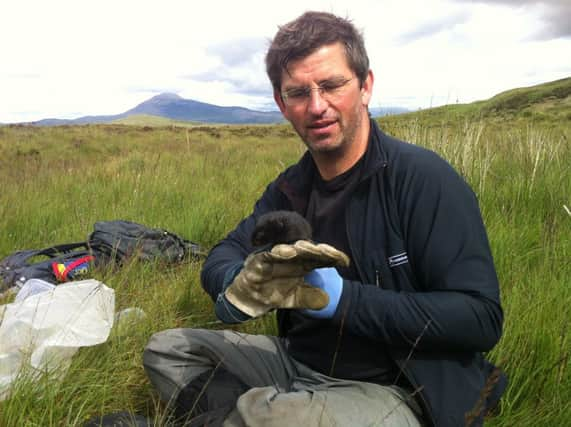US invaders threaten native Scottish wildlife


Mink are carefully controlled in many parts of Scotland and have been eradicated from some areas entirely.
But new field research by ecology experts has found the animals are feeding on increasingly abundant supplies of equally invasive North American signal crayfish.
Advertisement
Hide AdAdvertisement
Hide AdAs a result, the mink are bigger and stronger, and the average number of pups born each year has more than doubled, making the population more resilient to culling.
Experts warn Scotland is heading towards an “invasion meltdown” and could lose most of its native freshwater fauna to non-native invaders.
Established in the wild in Scotland in the 1950s, mink are already believed to number in their tens of thousands.
The American natives are thought to be behind a 95 per cent decline in water voles, and have severely reduced populations of birds such as moorhens, coots, widgeon and teal, as well as fish stocks.
Whereas in the United States minks are preyed upon by a range of animals including coyotes, wolves, bears and bobcats, in the UK they have no natural predators.
CONNECT WITH THE SCOTSMAN
• Subscribe to our daily newsletter (requires registration) and get the latest news, sport and business headlines delivered to your inbox every morning
Since 2011, the Scottish Mink Initiative has eradicated mink from tracts of northern Scotland, including the Cairngorms National Park and Insh Marshes, and currently works hard to control populations across the country.
But new field research has found mink thriving on abundant supplies of signal crayfish found in many parts of the country, including Loch Ken in Dumfries and Galloway, the River Clyde and River Tweed.
Advertisement
Hide AdAdvertisement
Hide AdExperts warn that non- native species from the same part of the world thrive when placed together – at the expense of native species.
Professor Xavier Lambin, professor of ecology at Aberdeen University and lead researcher on the Scottish Mink Initiative, warned: “The situation is much worse than we expected.
“There is no doubt the presence of crayfish is giving American mink a huge boost, offering the animals a big platter of food, allowing for a higher density of mink to survive in much smaller areas, making them more productive and resilient to control.”
Lambin said a mink will typically produce five pups a year, but those with an abundant supply of signal crayfish were producing up to 12.
He continued: “The size of mink varies greatly, but in an area with an abundant supply of invasive crayfish you would expect mink to grow bigger and fatter, as well as see their numbers increasing.
“It would be highly advisable to act early. If populations of crayfish are not controlled, it will be very costly to the taxpayer and could open the door for other non-native species.
“Where we have one invasive non-native species, then it makes it easier for another to move in. If we let the population continue to grow then it would be a massive problem in Scotland and could lead to an invasion meltdown – where you lose most of your own native species.”
Different techniques for controlling signal crayfish are being trialled in Scotland.
Advertisement
Hide AdAdvertisement
Hide AdRupert Houghton, researcher from the University of Aberdeen, has spent the past year collecting and analysing data on the different methods.
He warned: “Currently we have around 10-15 known populations in Scotland. Feeding on the crayfish allows for a higher density of American mink – decreasing their home range because they don’t need to forage as far for food. If we are going to tackle mink numbers then it makes sense to target the food source.”
Jo Long, senior conservation policy officer from the Scottish Environment Protection Agency, said: “Trials to eradicate signal crayfish from ponds using biocides have had some success. However, the chemicals are too harmful to native wildlife to use in lochs or rivers.”
SCOTSMAN TABLET AND IPHONE APPS